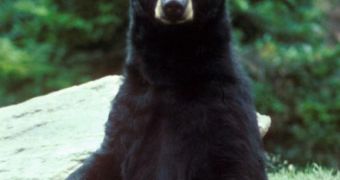American black bears that live next to urban sprawls are more prone to dying younger and more violently than those living in wild areas, where human-bear contact is limited. Also, their cubs mortality rate is several times higher than in the wild, due to common accidents, such as car collisions.
A team of researchers from the Wildlife Conservation Society (WCS) has also found that “urban” bears start reproducing earlier, when they are 4 to 5 years old, as opposed to their wild counterparts, which tend to do that when they are 7 or 8 years old.
Jon Beckmann, leader of this study, says that, in some cases, female bears had their first cubs when they were as young as 2-3 years old and that they often died before the baby bear could take care of itself. This also contributes to the high mortality rates registered among black bears of all ages that live near cities.
Containers and garbage dumps offer to bears living next to them virtually unlimited supplies, both during summer and winter, and the bears just can't say no. On average, an urban bear is by as much as 20-30% heavier than one living in the wild, where conditions are bitter and the food is scarce. On the other hand, bears living in the vicinity of cities tend to die at a much earlier age than others because of the high risks roads, cars and human encounters pose. Out of the 12 specimens that Beckmann studied over 10 years, all died before the study was finished.
WCS specialists, who are conducting several similar experiments in various regions of the U.S., say that urban centers are like magnets to black bears, due to the feeding possibilities they offer. The downside in that is that several wild areas are completely depopulated, and that the bears do not return once they've gone. As a result, the bear population is dwindling on a nation-wide level.

 14 DAY TRIAL //
14 DAY TRIAL //